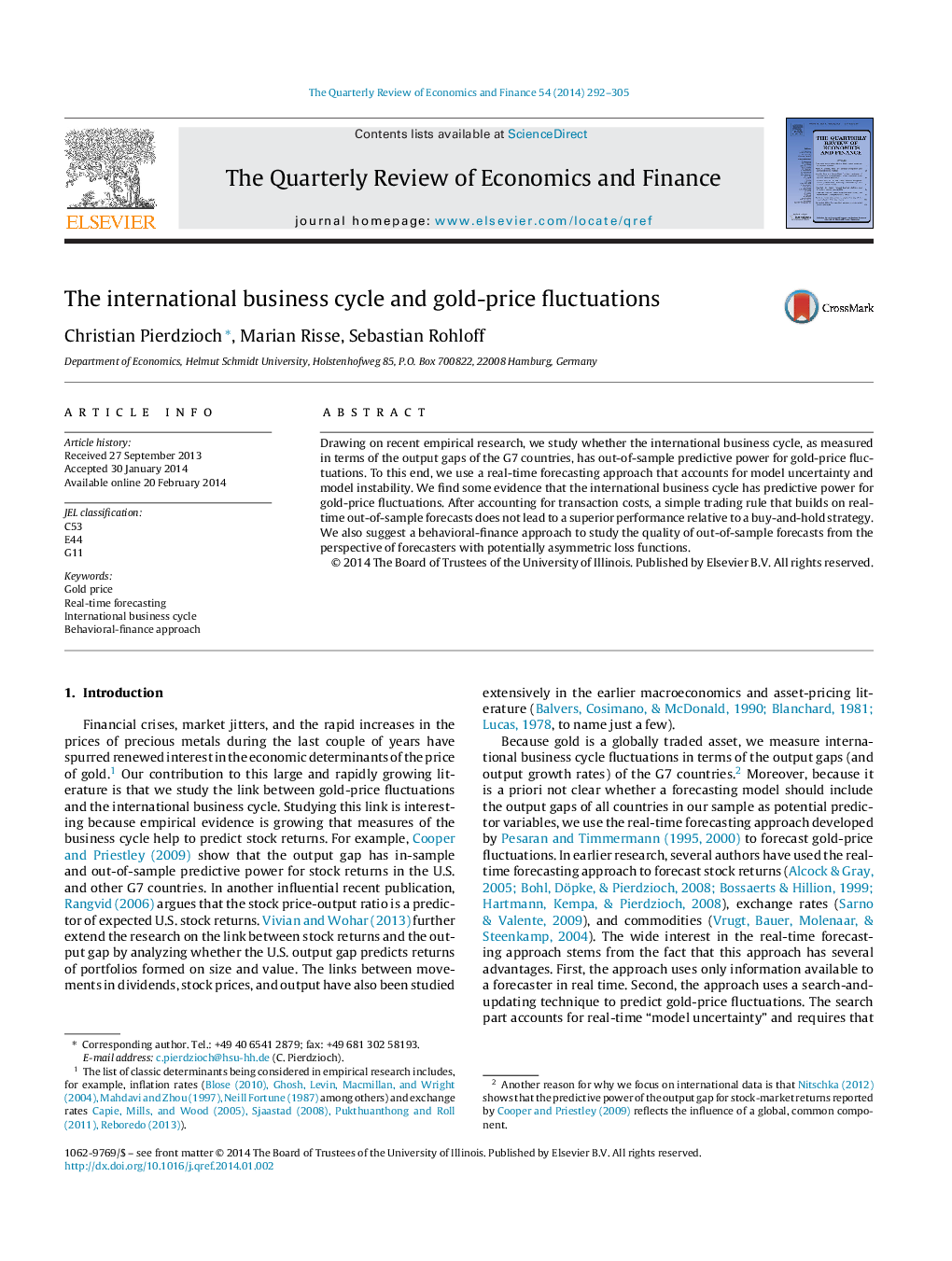| Article ID | Journal | Published Year | Pages | File Type |
|---|---|---|---|---|
| 982236 | The Quarterly Review of Economics and Finance | 2014 | 14 Pages |
•We study the link between the international business cycle and gold-price fluctuations.•We frame our analysis in terms of a real-time forecasting approach.•We develop a behavioral-finance approach to assess the economic value-added of forecasts.•We find that the gold market is informationally efficient with respect to international business-cycle fluctuations.
Drawing on recent empirical research, we study whether the international business cycle, as measured in terms of the output gaps of the G7 countries, has out-of-sample predictive power for gold-price fluctuations. To this end, we use a real-time forecasting approach that accounts for model uncertainty and model instability. We find some evidence that the international business cycle has predictive power for gold-price fluctuations. After accounting for transaction costs, a simple trading rule that builds on real-time out-of-sample forecasts does not lead to a superior performance relative to a buy-and-hold strategy. We also suggest a behavioral-finance approach to study the quality of out-of-sample forecasts from the perspective of forecasters with potentially asymmetric loss functions.
